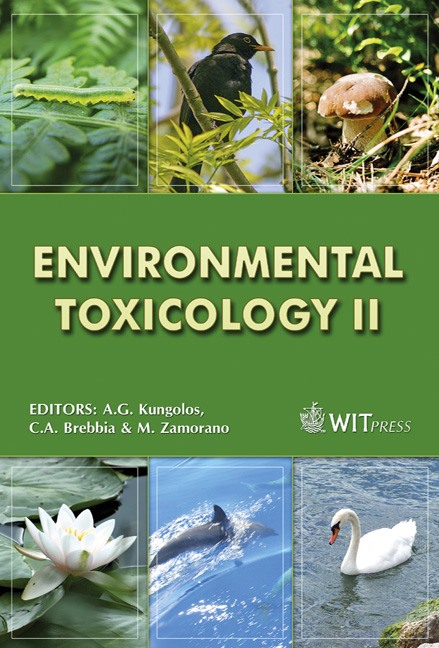Ex-situ Bioremediation Of Polycyclic Aromatic Hydrocarbons In Sewage Sludge
Price
Free (open access)
Transaction
Volume
110
Pages
10
Page Range
189 - 198
Published
2008
Size
290 kb
Paper DOI
10.2495/ETOX080201
Copyright
WIT Press
Author(s)
J. E. Schmidt, S. B. Larsen & D. Karakashev
Abstract
Polycyclic aromatic hydrocarbons (PAH) are naturally occurring organic compounds. As a result of anthropogenic activities, PAH concentration has increased in the environment considerably. PAH are regarded as environmental pollutants because they have toxic, mutagenic and carcinogenic effects on living organisms. A promising approach to reduce PAH pollution is based on the implementation of the natural potential of microorganisms to utilize hydrocarbons. In this study Proteiniphilum acetatigenes was used for bioaugmentation during anaerobic digestion of sewage sludge to improve the PAH removal. Primary and mixed (primary: secondary sludge = 1:3) sewage sludges were collected from a waste water treatment plant (WWTP) and degraded under mesophilic anaerobic conditions. The primary and mixed sludge produced separately from this digestion was used for three bioaugmentation batch experiments: firstly, with the addition of bacteria in the beginning of the experiment; secondly, with the addition of bacteria in the beginning and then every second and third day, with the addition of encapsulated bacteria in the beginning. Batch performance was monitored by following volatile fatty acids and methane production during degradation of PAH found in the sludge. Results obtained showed that the performances of the first two batch experiments were positively affected by the introduced strains. However, no preference towards individual PAH degradation was observed, but the methane production in the batches with the encapsulated cells was strongly inhibited due to tannin production during alginate lysis. A clear preference for naphthalene removal was also registered due to PAH diffusion problems through the alginate beads. It was shown that the primary sludge had better potential for PAH removal compared to mixed sludge. This was due to lower organic content in the primary sludge facilitating PAH bioavailability for the introduced microorganisms. Keywords: bioremediation, PAH, sewage sludge.
Keywords
bioremediation, PAH, sewage sludge.





